- Introduction
- Context
- Life
- Thought
-
Works
- The multilingual nature of Llull's works
- Llull and the catalan language
- Diffusion and preservation
- Book of Contemplation
- Book of the Gentile
- Book of the Order of Chivalry
- Doctrina pueril
- Romance of Evast and Blaquerna
- Book of the Lover and the Beloved
- Ars demonstrativa
- Felix or the Book of Wonders
- Book of the Beasts
- Desconhort
- Tree of Science
- Exemplary Tree
- Cant de Ramon
- Rhetorica nova
- Logica nova
- Liber de fine
- Ars brevis
- Phantasticus
- Ars brevis praedicationis
- Gallery of images
- Database / Dictionary
Ars brevis
This work, written at Pisa in 1308, was the most widely read and widely distributed version of the Art. It corresponded to a desire, peculiar to the second of the Art’s phases, to simplify the principles of the Art. The Ars brevis starts by stating that it was written so as to facilitate access to the ‘Great Art’, specifically the Ars generalis ultima (1305-1308).
The graphic devices which render the Art visible, both in the Ars brevis and in the ‘Great Art’, are the Figures and the Alphabet.
The Figures
The Figure A and the Figure T are circles around whose circumference letters are inscribed.
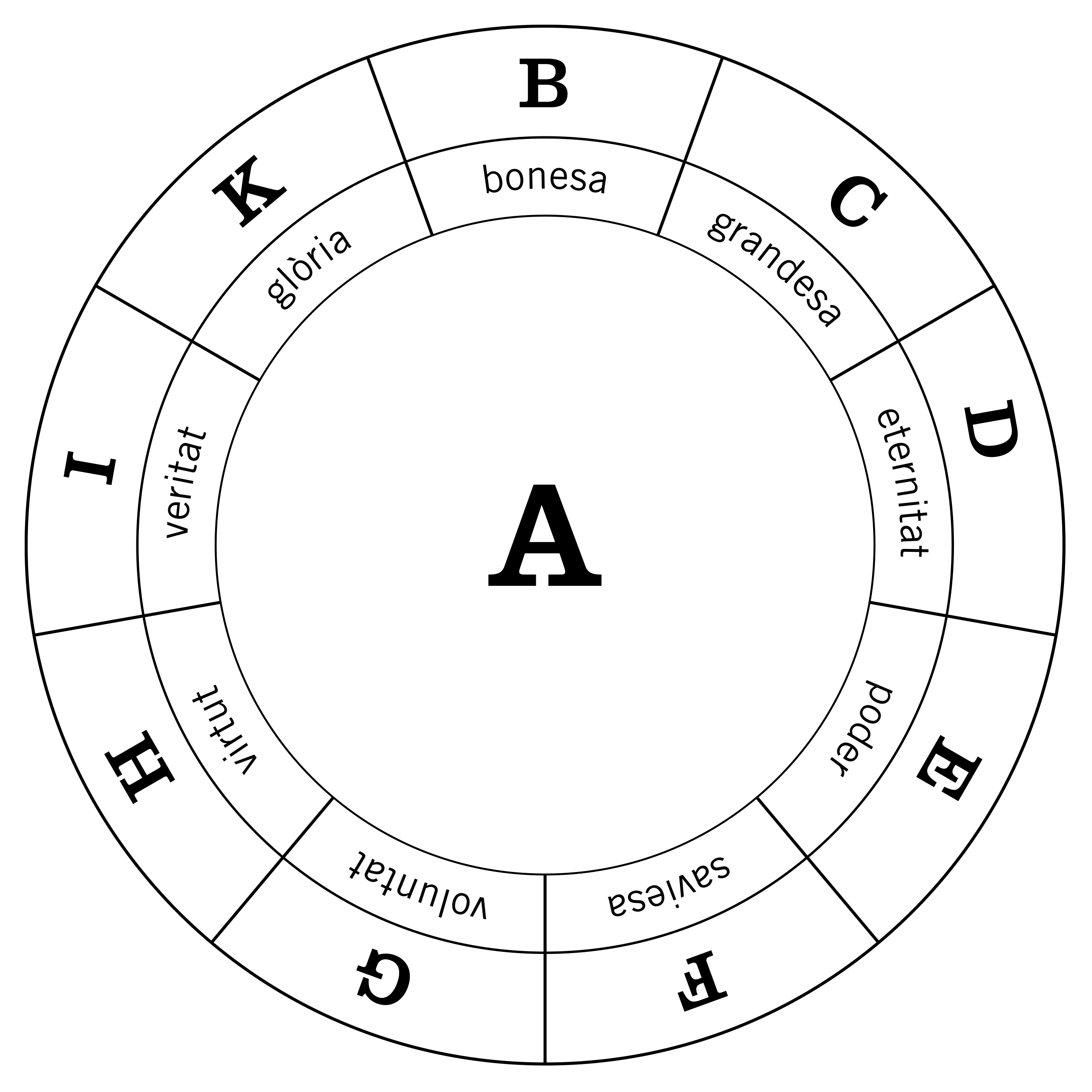
Figure A represents the nine most fundamental principles of the Art. B: goodness, C: greatness, D: eternity/duration, E: power/authority, F: wisdom/instinct, G: will/appetite, H: virtue, I: truth, K: glory.
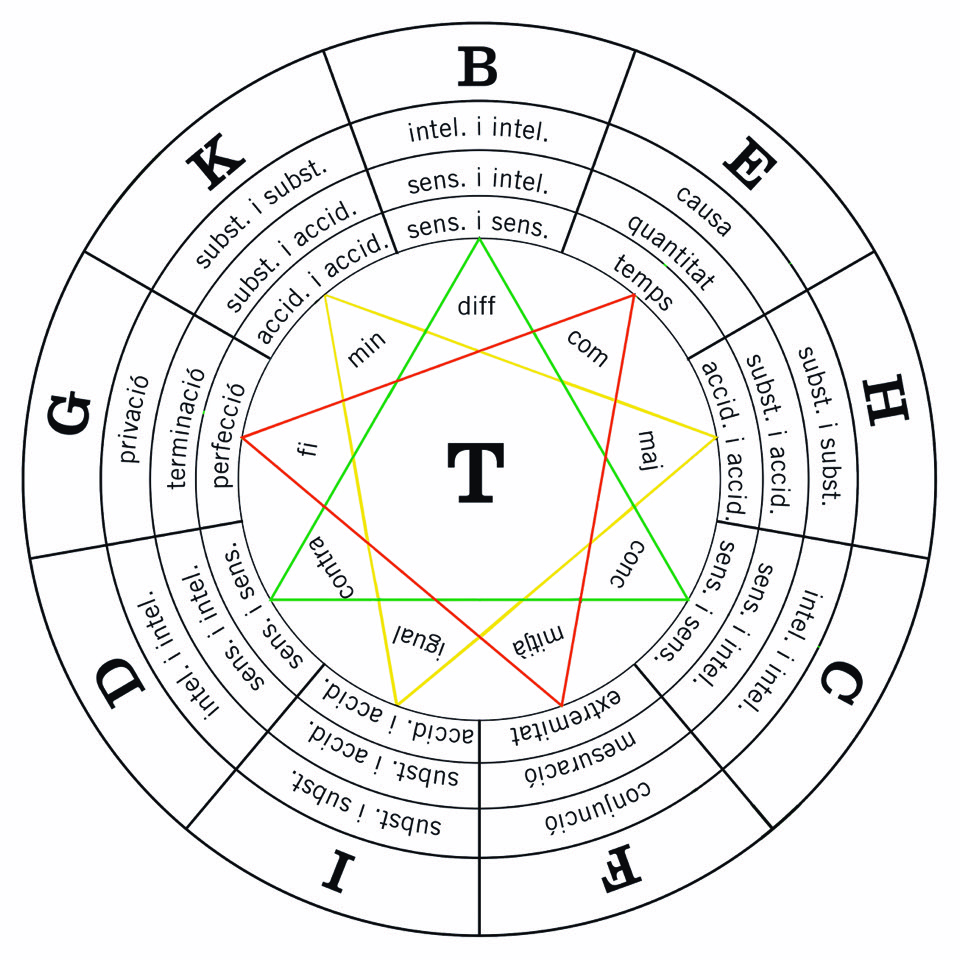
Figure T consists of three interlinked triangles, each one of a different colour, arranged within a circle; and it represents three triads of concepts.
B: difference - C: concordance - D: contrariety (green)
E: beginning - F: middle - G: end (red)
H: majority - I: equality - K: minority (yellow)
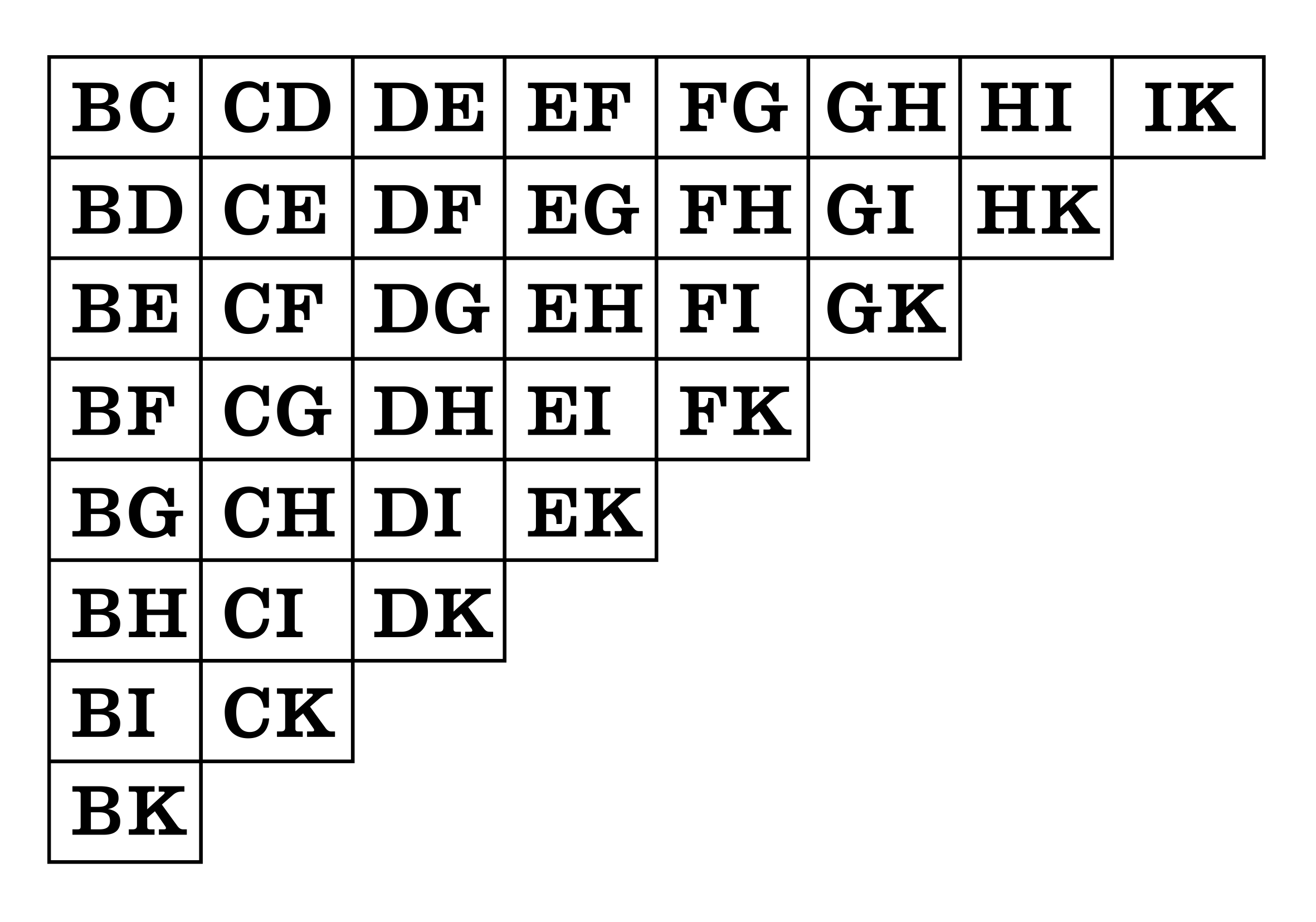
The Third Figure is in the form of a triangle and contains ‘compartments’ or pairs of all the possible binary combinations without repetitions of the concepts from the first two figures.
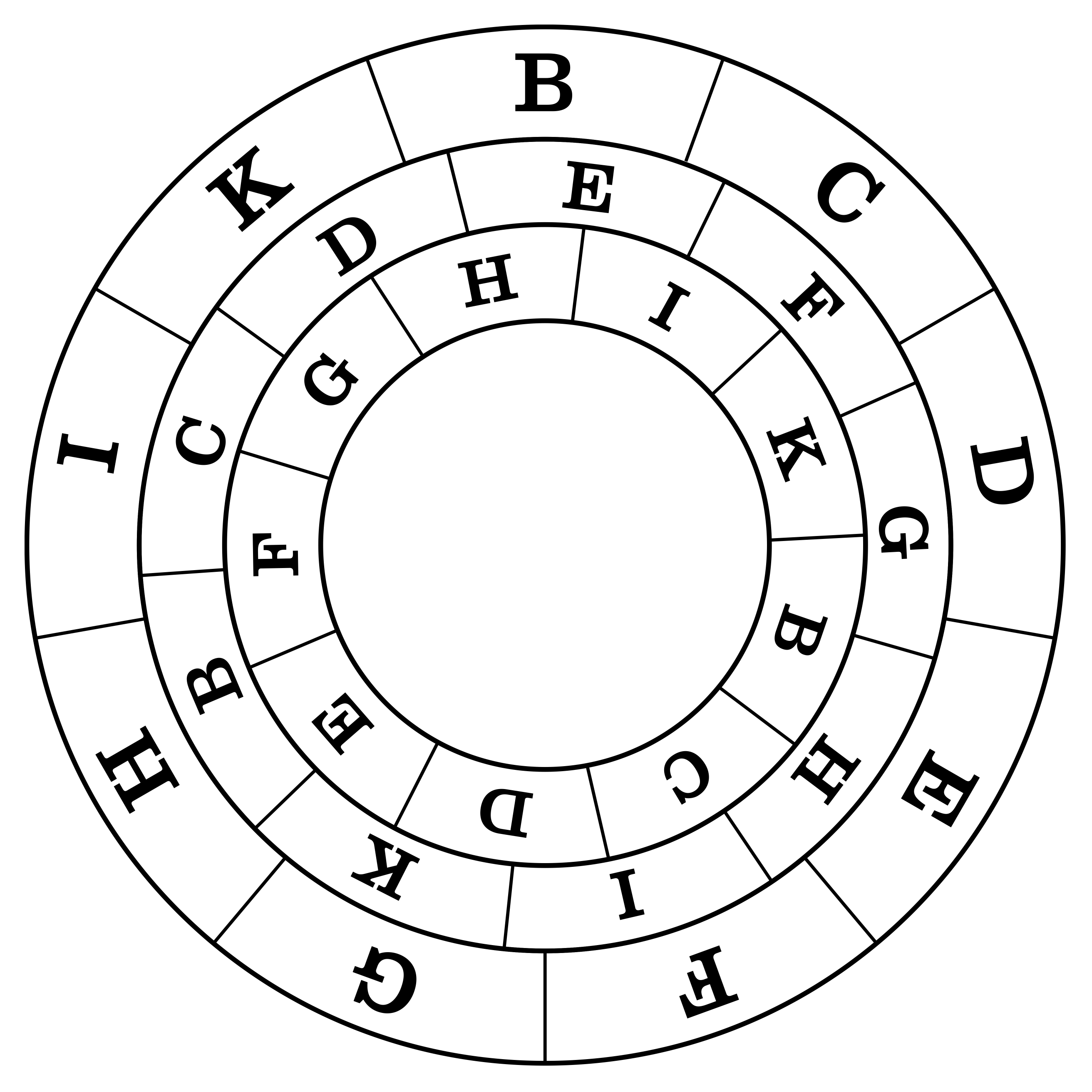
The Fourth Figure is circular and rotates. Upon a fixed circular corona marked with the nine letters from B to K, are superimposed two more smaller circles, marked with the same letters, and capable of rotating around their common centre. This device serves to generate ‘compartments’ of three letters by rotating the inner circles. In the Tabula generalis (1293-1294) Llull provided a “Table” displaying all the possible ternary combinations without repetitions, which amounted to 1,680; the Fourth Figure of the Ars brevis summarised this function of the Art.
The Alphabet
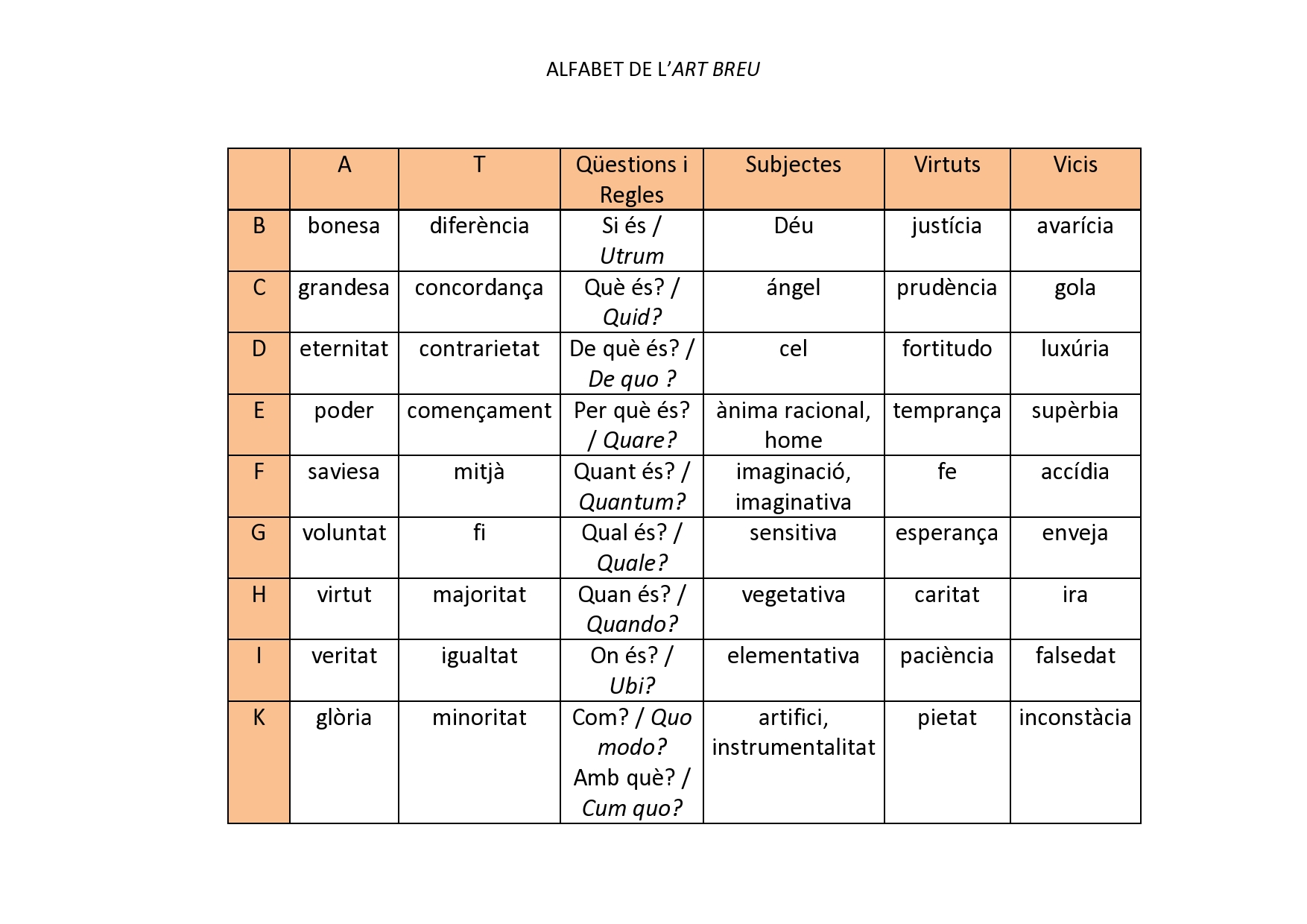
As regards the Alphabet, the Ars brevis uses the letters A T to designate the figures relating to the principles, while the nine letters between B to K acquire different values according to whether they represent the principles from Figure A, those from Figure T or from four more series of concepts, which make up the Alphabet of the Ars brevis.
The four series of additional concepts are:
- Questions or Rules. B: Is it?/possibility. C: What is it?/essence. D: From/Of what is it?/matter. E: Why is it?/form. F: How much is it?/quantity. G: Which is it?/quality. I: When is it?/time. H: Where is it?/place. K: How is it?/ mode and With what is it?/instrument.
- Subjects. B: God. C: Angel. D: Heavens. E: Man. F: Imaginative. G: Sensitive. H: Vegetative. I: Elementative. K: Instrumentative.
- Virtues. B: Justice. C: Prudence. D: Fortitude. E: Temperance. F: Faith. G: Hope. H: Charity. I: Patience. K: Piety.
- Vices. B: avarice. C: gluttony. D: lust. E: pride. F: accide. G: envy. H: ire. I: lying. K: inconstancy.
The Ars brevis operates in accordance with a remodelled version of logic that Llull dealt with in the Logica nova (1303): the ‘compartments’ containing two or three concepts correspond, therefore, to propositions and syllogisms. The Art shows one how to ‘find’ all possible propositions and syllogisms from the terms given in the Alphabet and how to verify their truth or falsity. The Tree of Science (1295-1296), on the other hand, reveals how the structure of principles and relations in the Ars brevis is linked with the whole of the intelligible world.
The Ars brevis contains thirteen highly dense parts. The first part presents the Alphabet; the second, the Figures; the third, the definitions of the Principles; the fourth, the Rules; the fifth, the Table; the sixth, the Evacuation of the Third Figure; the seventh, the Multiplication of the Fourth Figure; the eighth, the ‘mixing’ (‘mixtio’) or combining of the Principles and the Rules; the ninth, the nine Subjects; the tenth, the application [of the Art]; the eleventh, the questions; the twelfth, familiarisation [with the Art]; the thirteenth, ‘the way to teach this Art’.